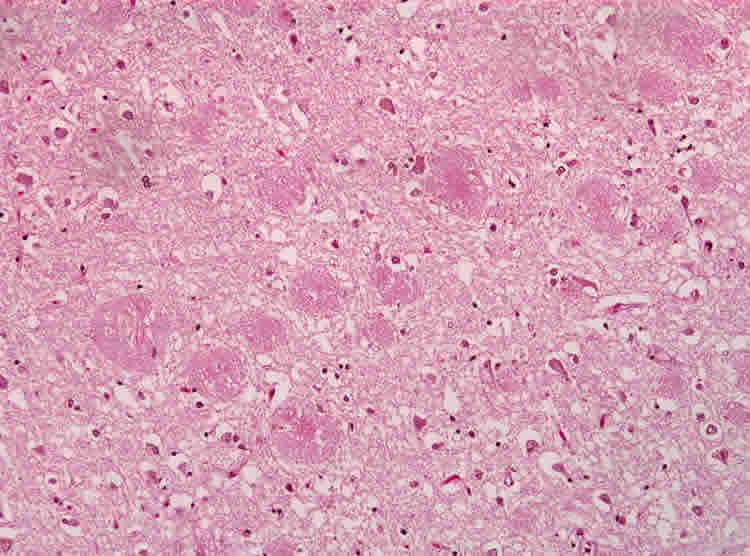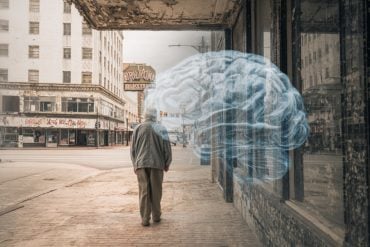3-D system should significantly reduce time and costs of drug development.
An innovative laboratory culture system has succeeded, for the first time, in reproducing the full course of events underlying the development of Alzheimer’s disease. Using the system they developed, investigators from the Genetics and Aging Research Unit at Massachusetts General Hospital (MGH) now provide the first clear evidence supporting the hypothesis that deposition of beta-amyloid plaques in the brain is the first step in a cascade leading to the devastating neurodegenerative disease. They also identify the essential role in that process of an enzyme, inhibition of which could be a therapeutic target.
“Originally put forth in the mid-1980s, the amyloid hypothesis maintained that beta-amyloid deposits in the brain set off all subsequent events – the neurofibrillary tangles that choke the insides of neurons, neuronal cell death, and inflammation leading to a vicious cycle of massive cell death,” says Rudolph Tanzi, PhD, director of the MGH Genetics and Aging Research Unit and co-senior author of the report receiving advance online publication in Nature. “One of the biggest questions since then has been whether beta-amyloid actually triggers the formation of the tangles that kill neurons. In this new system that we call ‘Alzheimer’s-in-a-dish,’ we’ve been able to show for the first time that amyloid deposition is sufficient to lead to tangles and subsequent cell death.”

While the mouse models of Alzheimer’s disease that express the gene variants causing the inherited early-onset form of the disease do develop amyloid plaques in their brains and memory deficits, the neurofibrillary tangles that cause most of the damage do not appear. Other models succeed in producing tangles but not plaques. Cultured neurons from human patients with Alzheimer’s exhibit elevated levels of the toxic form of amyloid found in plaques and the abnormal version of the tau protein that makes up tangles, but not actual plaques and tangles.
Genetics and Aging Research Unit investigator Doo Yeon Kim, PhD, co-senior author of the Nature paper, realized that the liquid two-dimensional systems usually used to grow cultured cells poorly represent the gelatinous three-dimensional environment within the brain. Instead the MGH team used a gel-based, three-dimensional culture system to grow human neural stem cells that carried variants in two genes – the amyloid precursor protein and presenilin 1 – known to underlie early-onset familial Alzheimer’s Disease (FAD). Both of those genes were co-discovered in Tanzi’s laboratory.
After growing for six weeks, the FAD-variant cells were found to have significant increases in both the typical form of beta-amyloid and the toxic form associated with Alzheimer’s. The variant cells also contained the neurofibrillary tangles that choke the inside of nerve cells causing cell death. Blocking steps known to be essential for the formation of amyloid plaques also prevented the formation of the tangles, confirming amyloid’s role in initiating the process. The version of tau found in tangles is characterized by the presence of excess phosphate molecules, and when the team investigated possible ways of blocking tau production, they found that inhibiting the action of an enzyme called GSK3-beta – known to phosphorylate tau in human neurons – prevented the formation of tau aggregates and tangles even in the presence of abundant beta-amyloid and amyloid plaques
“This new system – which can be adapted to other neurodegenerative disorders – should revolutionize drug discovery in terms of speed, costs and physiologic relevance to disease,” says Tanzi. “Testing drugs in mouse models that typically have brain deposits of either plaques or tangles, but not both, takes more than a year and is very costly. With our three-dimensional model that recapitulates both plaques and tangles, we now can screen hundreds of thousands of drugs in a matter of months without using animals in a system that is considerably more relevant to the events occurring in the brains of Alzheimer’s patients.”
Tanzi is the Kennedy Professor of Child Neurology and Mental Retardation, and Kim is an assistant professor of Neurology at Harvard Medical School. Se Hoon Choi, PhD, and Young Hye Kim of the MGH Genetics and Aging Research Unit are co-lead authors of the Nature paper. The study was supported by a grant from the Cure Alzheimer’s Fund and by National Institute of Health grants 5P01AG15379 and 5R37MH060009.
Contact: Terri Ogan – Massachusetts General Hospital
Source: Massachusetts General Hospital press release
Image Source: The image is credited to Jensflorian and is licensed Creative Commons Attribution-Share Alike 3.0 Unported
Original Research: Abstract for “A three-dimensional human neural cell culture model of Alzheimer’s disease” by Se Hoon Choi, Young Hye Kim, Matthias Hebisch, Christopher Sliwinski, Seungkyu Lee, Carla D’Avanzo, Hechao Chen, Basavaraj Hooli, Caroline Asselin, Julien Muffat, Justin B. Klee, Can Zhang, Brian J. Wainger, Michael Peitz, Dora M. Kovacs, Clifford J. Woolf, Steven L. Wagner, Rudolph E. Tanzi and Doo Yeon Kim in Nature. Published online October 12 2014 doi:10.1038/nature13800






